The Bayeux Tapestry: One Of The Great Historical Records Of The Middle Ages
A. Sutherland - AncientPages.com - The Bayeux Tapestry is an impressive example of Romanesque art depicting the Norman Conquest of England in 1066 by William, Duke of Normandy, the historical event that culminated in the famous Battle of Hastings (Oct. 14, 1066).
The Bayeux Tapestry's vivid action expressed in the scenes strongly resembles a film, but it is more than that; the artifact is important as a source for 11th-century history.
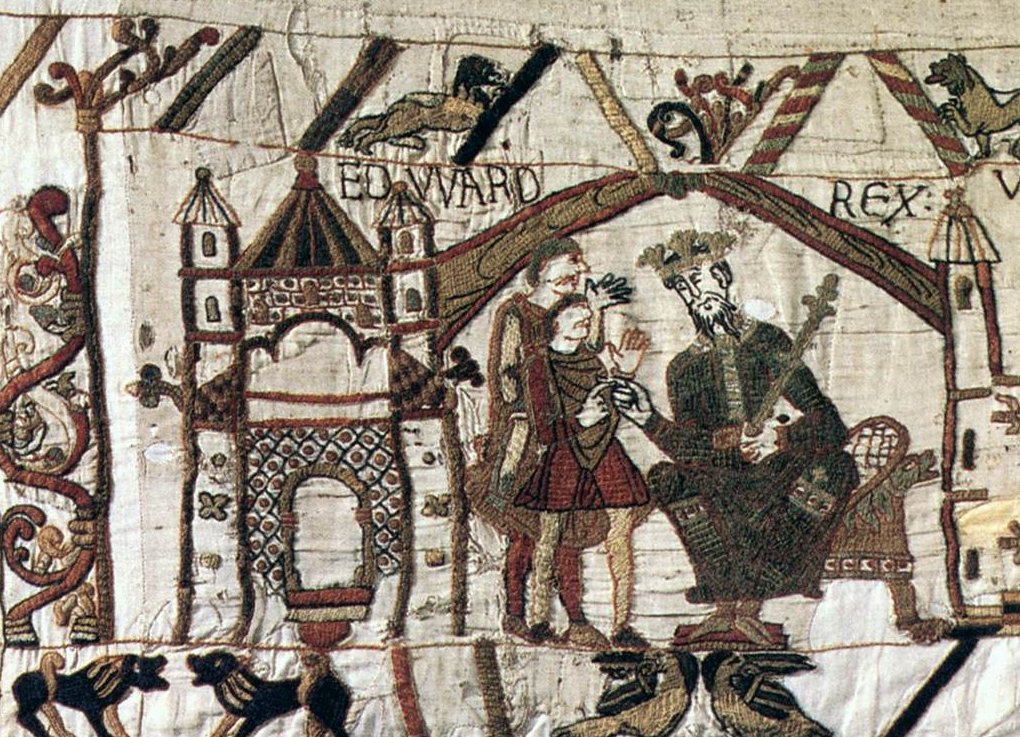
When first referred to (1476), the tapestry was used once a year to decorate the nave of the cathedral in Bayeux, France. There it was “discovered” by the French antiquarian and scholar Bernard de Montfaucon, who published the earliest complete reproduction of it in 1730. image credit: Bayeux Museum
The artwork is an embroidered cloth, about 229 feet (70m), 19.5 inches (49.5 cm) wide and weighs 350 kilos. It consists of fifty-eight embroidered scenes (other sources mention more than 70 scenes) with Latin tituli, embroidered on linen with colored woolen yarns.
With few exceptions, the events are presented in the historically correct sequence, with each of the heroes appearing several times.

Having twice narrowly escaped destruction during the French Revolution, the tapestry was exhibited in Paris at Napoleon’s wish in 1803–04 and thereafter was in civil custody at Bayeux, except in 1871 (during the Franco-German War) and from September 1939 to March 1945 (during World War II). image credit: Bayeux Museum
The borders on the tapestry are full of additional depictions of subplots and legends that constitute a complement to the main scenes.
Ten colors of woolen thread are used to represent as many as 626 characters, the 37 buildings including Mont-Saint-Michel, 202 horses, mules, and the 41 ships.
Many fascinating historical characters(primarily male) are portrayed and among them, the most represented protagonists are Edward The Confessor, William, Duke of Normandy, King of England, Harold Godwinson, Earl of Wessex and Odon de Conteville, half brother of William and bishop of Bayeux.
Towards the end, the vivid action of the Battle of Hastings culminates and the lower border of the tapestry is devoted to dead and wounded soldiers, hordes of bowmen, and the plundering of casualties.
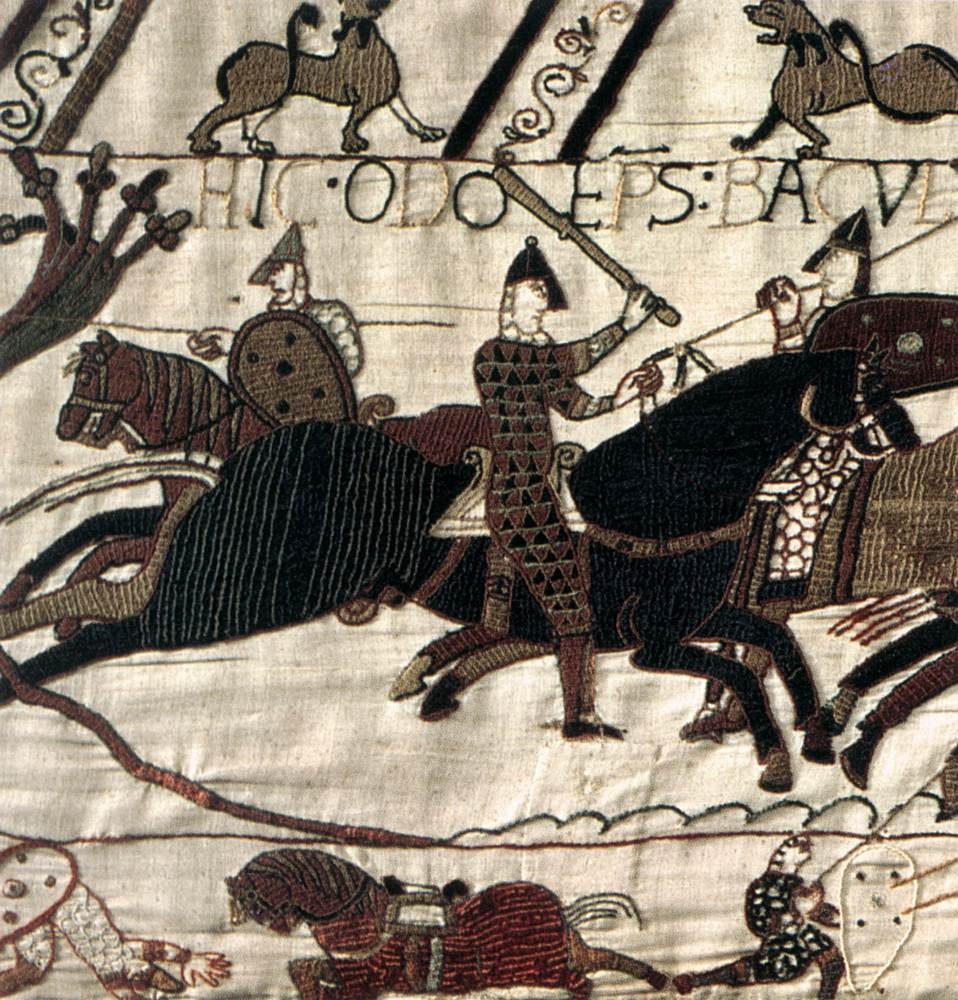
The decorative borders of the tapestry have value for the study of medieval fables. image credit: Bayeux Museum
It is easy to imagine all these events because an unknown skilled artist - an unknown English weaver - narrates them visually, leading the eye from one phase to another.
The depictions on the Bayeux Tapestry are handmade with woolen threads and needled onto a strip of linen. They are embroidered in red, yellow, grey, bright green and a darker green, and three shades of blue.
Although the tapestry has been exposed to light and dirt for over nine centuries, the eight colors of woolen thread are still vivid, bright and beautiful.
Many art historians assume that the tapestry was made in southern England (perhaps at the St Augustine monastery in Canterbury) for Odo of Bayeux, bishop, and half-brother of William the Conqueror. Almost certainly, the tapestry was hung in the hall of a bishop's palace.
It is presently exhibited in a special museum in Bayeux, Normandy, France, with a Victorian replica in Reading, Berkshire, England.
Written by – A. Sutherland AncientPages.com Staff Writer
Copyright © AncientPages.com All rights reserved. This material may not be published, broadcast, rewritten or redistributed in whole or part without the express written permission of AncientPages.com
Expand for referencesReferences:
More From Ancient Pages
-
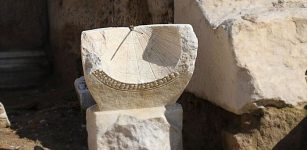 2,000-Year-Old Sundial Discovered In Ancient City Of Laodicea, Turkey
Archaeology | Mar 25, 2020
2,000-Year-Old Sundial Discovered In Ancient City Of Laodicea, Turkey
Archaeology | Mar 25, 2020 -
 Moll Cutpurse – London’s Queen Of Thieves
Featured Stories | Jan 15, 2019
Moll Cutpurse – London’s Queen Of Thieves
Featured Stories | Jan 15, 2019 -
 Secret Tunnel Leads To Christian Chapel In Ancient Suomela Monastery In Turkey
Archaeology | Dec 27, 2017
Secret Tunnel Leads To Christian Chapel In Ancient Suomela Monastery In Turkey
Archaeology | Dec 27, 2017 -
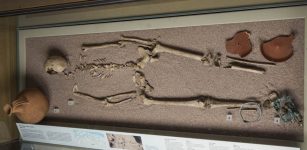 London Was Always A Multicultural City, DNA Research Confirms
Archaeology | Nov 26, 2015
London Was Always A Multicultural City, DNA Research Confirms
Archaeology | Nov 26, 2015 -
 LIDAR Data Helped To Discover Unexplored Region Of Maya World In Campeche, Mexico
Archaeology | Oct 29, 2024
LIDAR Data Helped To Discover Unexplored Region Of Maya World In Campeche, Mexico
Archaeology | Oct 29, 2024 -
 13th Century Black Book Of Carmarthen: Erased Poetry And Ghostly Faces Revealed By UV Light
Artifacts | Apr 4, 2015
13th Century Black Book Of Carmarthen: Erased Poetry And Ghostly Faces Revealed By UV Light
Artifacts | Apr 4, 2015 -
 Ruins Of The Ancient City Of Palmyra Documented – What Remains After The Fall Of The Assad Regime
Archaeology | Feb 14, 2025
Ruins Of The Ancient City Of Palmyra Documented – What Remains After The Fall Of The Assad Regime
Archaeology | Feb 14, 2025 -
 Susanoo-no-Mikoto – Shinto God Of The Sea And Storms Was Banished From Heaven
Featured Stories | Nov 23, 2018
Susanoo-no-Mikoto – Shinto God Of The Sea And Storms Was Banished From Heaven
Featured Stories | Nov 23, 2018 -
 Strange Ancient Underground Mystery In Connecticut Baffles Residents And Scientists
Featured Stories | Jun 3, 2024
Strange Ancient Underground Mystery In Connecticut Baffles Residents And Scientists
Featured Stories | Jun 3, 2024 -
 Race Against Time: Crucial Expedition To Delve Into Bouldnor Cliff, Europe’s Mesolithic Underwater Stone Age Site
Underwater Discoveries | Apr 28, 2024
Race Against Time: Crucial Expedition To Delve Into Bouldnor Cliff, Europe’s Mesolithic Underwater Stone Age Site
Underwater Discoveries | Apr 28, 2024 -
 Mystery Of King Solomon’s Temple
Biblical Mysteries | Dec 3, 2018
Mystery Of King Solomon’s Temple
Biblical Mysteries | Dec 3, 2018 -
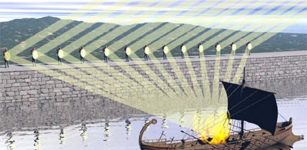 Giant Solar Mirrors And Sophisticated Lenses – Advanced Ancient Technology Used By Our Ancestors
Ancient Technology | Jun 15, 2020
Giant Solar Mirrors And Sophisticated Lenses – Advanced Ancient Technology Used By Our Ancestors
Ancient Technology | Jun 15, 2020 -
 Crosby-Schøyen Codex: Ancient Coptic Manuscript Reveals Sermon That Spurred Violence Against Jews
Featured Stories | Jun 5, 2024
Crosby-Schøyen Codex: Ancient Coptic Manuscript Reveals Sermon That Spurred Violence Against Jews
Featured Stories | Jun 5, 2024 -
 Burnt Mound Complex Dated To Bronze Age – Uncovered At Suffolk Site
Archaeology | Jun 19, 2023
Burnt Mound Complex Dated To Bronze Age – Uncovered At Suffolk Site
Archaeology | Jun 19, 2023 -
 New Discoveries In Underwater Excavations Of Sunken Cities Of Canopus and Heracleion
Archaeology | Jul 29, 2019
New Discoveries In Underwater Excavations Of Sunken Cities Of Canopus and Heracleion
Archaeology | Jul 29, 2019 -
 Why Winter Solstice Matters Around The World
Archaeoastronomy | Dec 20, 2022
Why Winter Solstice Matters Around The World
Archaeoastronomy | Dec 20, 2022 -
 How Did The Early Rapa Nui People Put Huge Hats On Giant Statues Of Easter Island?
Ancient Technology | Jun 5, 2018
How Did The Early Rapa Nui People Put Huge Hats On Giant Statues Of Easter Island?
Ancient Technology | Jun 5, 2018 -
 Ants May Hold the Clues Why The Human Brain Decreased In Size 3,000 Years Ago – Scientists Say
Archaeology | Oct 22, 2021
Ants May Hold the Clues Why The Human Brain Decreased In Size 3,000 Years Ago – Scientists Say
Archaeology | Oct 22, 2021 -
 Strange Tale Of Demonic Possession And Exorcism In 17th-Century New France – What Happened?
Featured Stories | Oct 21, 2022
Strange Tale Of Demonic Possession And Exorcism In 17th-Century New France – What Happened?
Featured Stories | Oct 21, 2022 -
 Sailing With The Phoenicians: Great Traders, Sailors And Navigators
News | Sep 6, 2015
Sailing With The Phoenicians: Great Traders, Sailors And Navigators
News | Sep 6, 2015
